The motoring world has now accepted the Corvette having its V8 behind the driver. It proved a positive move for those of us hanging off the bottom of the world.
The engine relocation made right-hand drive manufacture of the eighth-gen Corvette Stingray a more financially viable proposition.
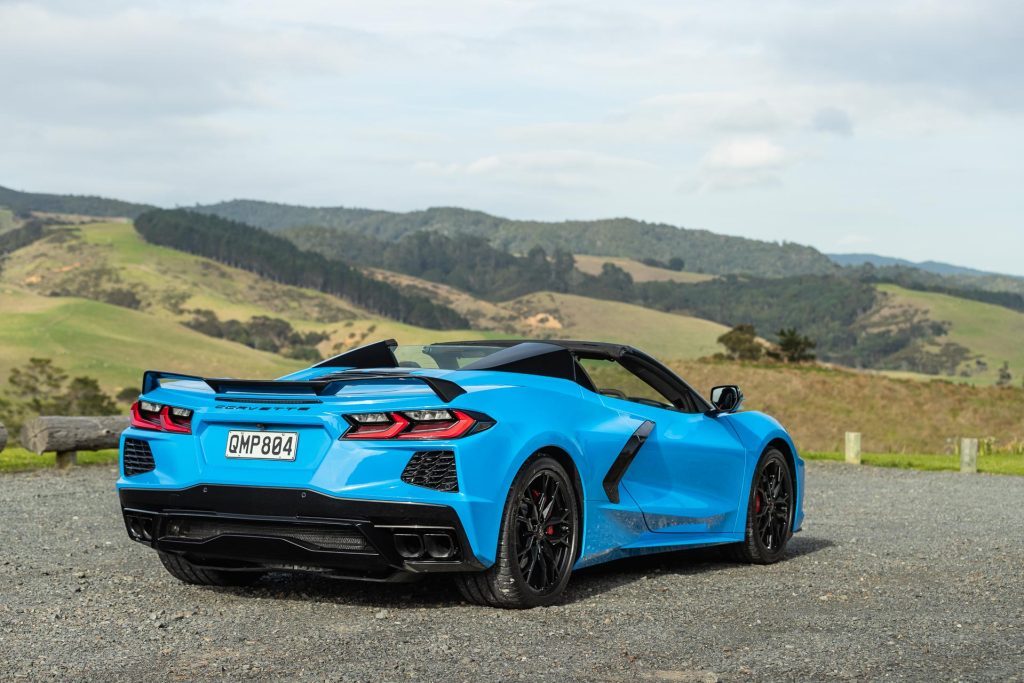
The big Chevy pick-ups are made, trucked, shipped, trucked, taken apart, remade, trucked, shipped and trucked yet again to make it to dealerships in NZ. The Corvette has a more direct path from its factory in Bowling Green, Kentucky to us here in En Zed.
However, that doesn’t make it cheap; in fact the MY24 cars have risen in price. We first drove the Stingray Coupe back in 2021. At that point it cost $154,990 in 2LT guise, and $169,990 for the 3LT.
The MY24 prices are now $185k and $200k, respectively. So what was once a bit of a performance car bargain in the realm of mid-engined machinery is no longer quite as affordable.
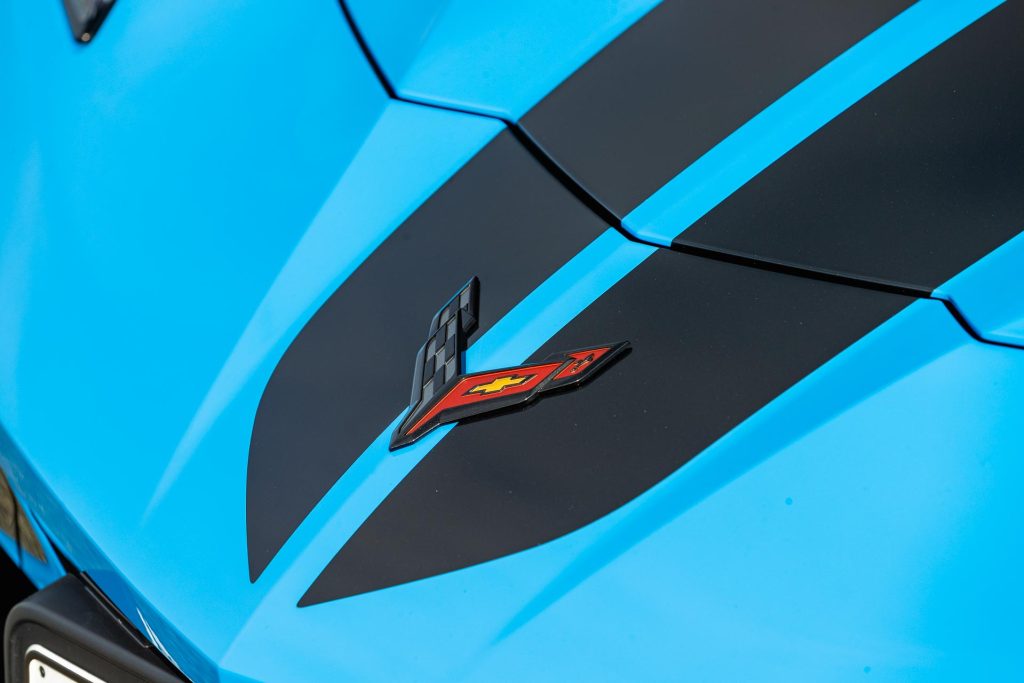
But those early adopters must be happy, the effects of depreciation lessened somewhat.
The MY24 does pack a few more features. We noted a new button on the steering wheel, the type that adjusts the gap to the car in front when using active cruise. So we thought this handy driving aid had been included in the update.
However, with cruise control activated we wondered why the Corvette wasn’t slowing as it approached traffic ahead. Turns out GM hasn’t been so generous with the MY24 additions.

These amount to a forward collision alert system with ‘low speed’ AEB – that includes pedestrian detection – and a following distance alert (that new button adjusting its sensitivity).
Auto high beams make the grade as does the dreaded lane keep assist. It’s not so bad on the motorway but does like to get involved on highways. Trying to switch it off had us bamboozled.
Google to the rescue helping us locate a button hiding in plain sight above the rear view mirror. Anything else new for 2024? Some extra colour choices and an optional transparent engine cover for the convertible.
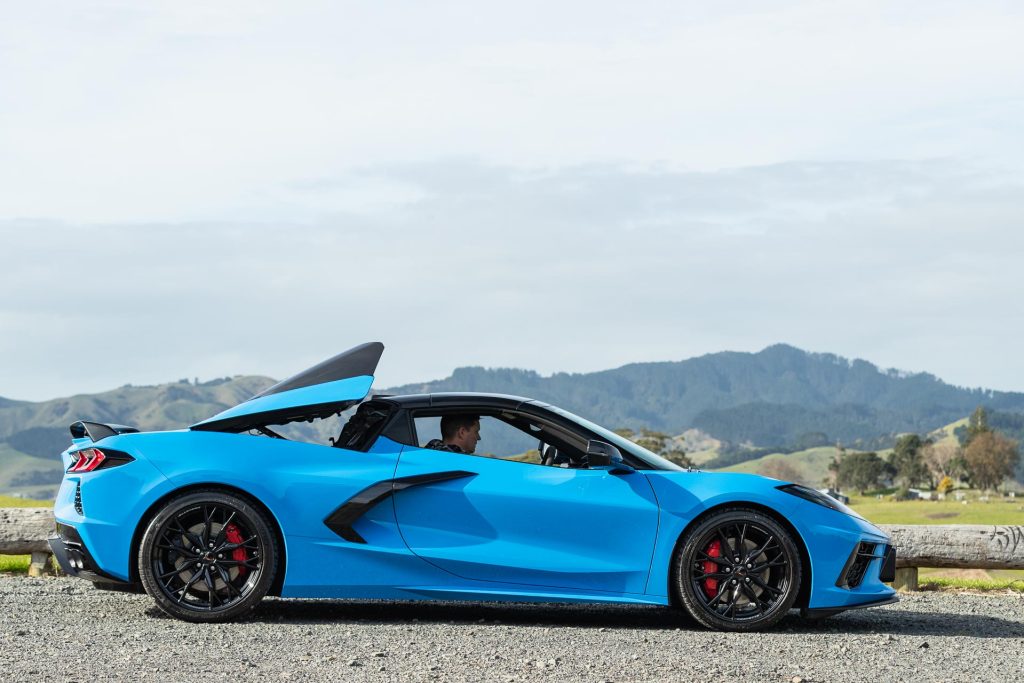
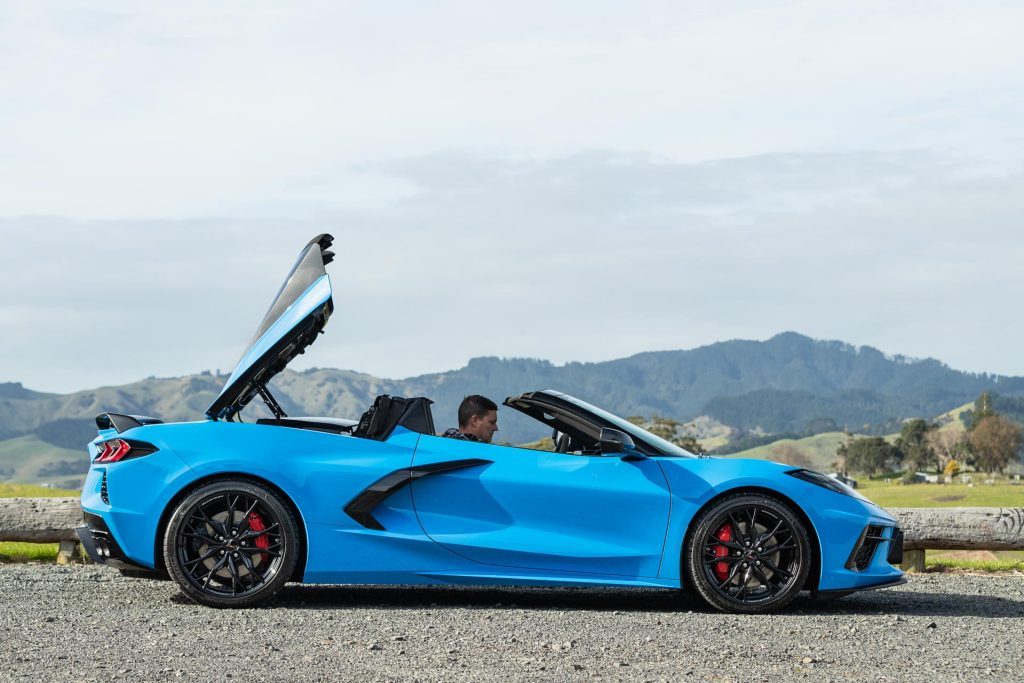
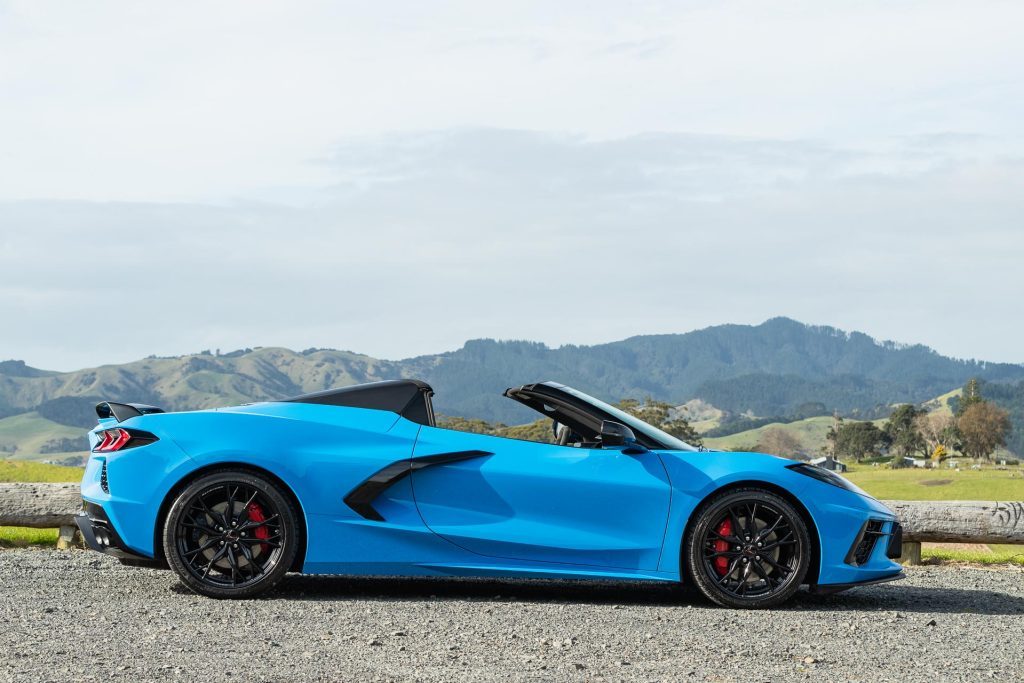
While you can remove the top from the coupe, it’s a manual task, and the roof panel has to be stored in the trunk. It’s hard to pick the coupe and convertible apart, the latter with a folding hardtop and so the rooflines are the same.
Colour us surprised to learn we had the convertible this time around. Just perfect for the winter. Pull the switch, and the roof disappears behind you, taking about 16 secs to transform.
It also works at slow speeds, and can be remotely activated via the key fob.
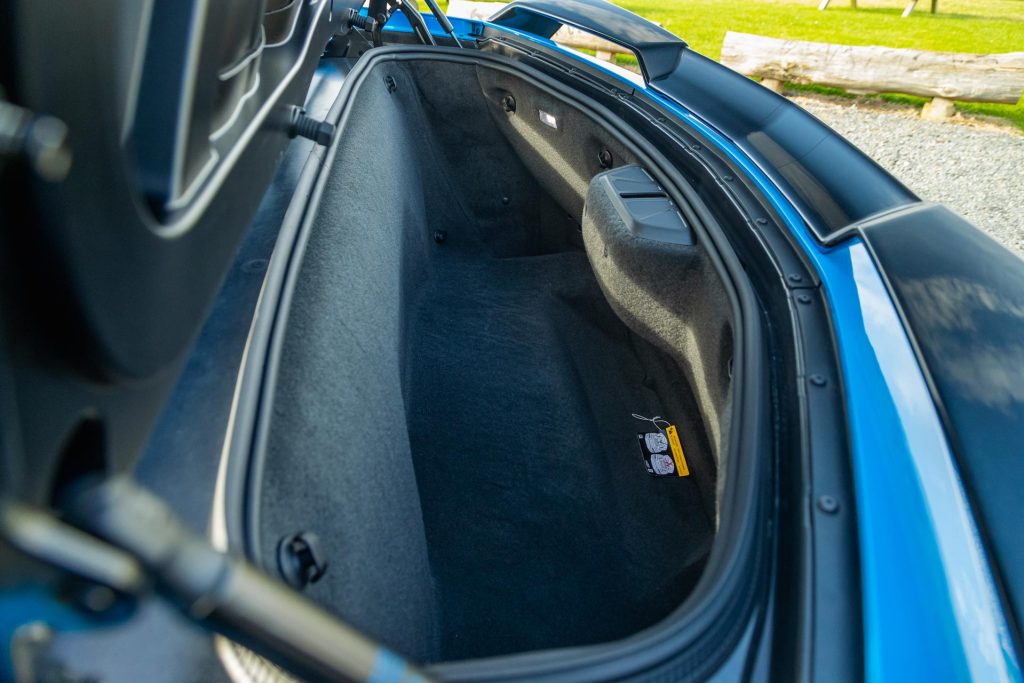
The bad news is the convertible costs even more, adding a $15k premium. There’s a bit more weight involved too, the folding mechanism adding around 37kg to the total.
There’s no difference to the structure underneath and so rigidity is the same. But there is that added convenience of going topless with just a button pushed, and no loss of luggage space.
As far as roofless racers go, this is a good one. The wind buffeting is minimal at 100km/h thanks in part to a retractable glass windblocker sitting between the hoops of the roll bar.
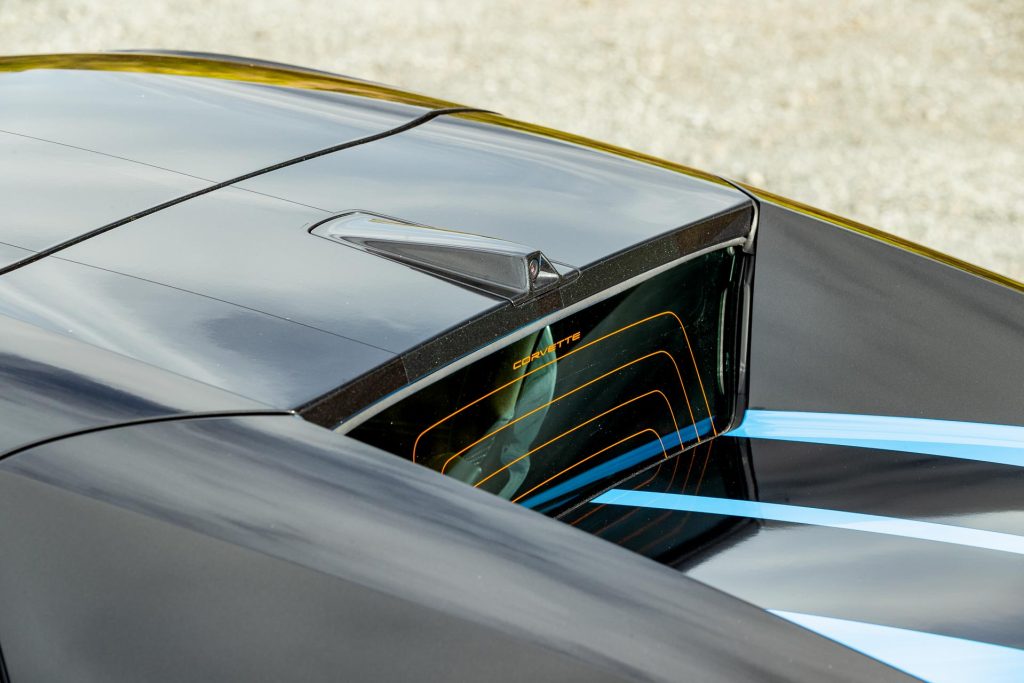
And while there’s a rush of wind overhead, it helps cancel out the rubber-related roar and allows you to enjoy more of the good aural vibes. We are talking about that LT2 V8 nestled in behind, breathing via the multi-mode performance pipes.
You’ve also got a warmer for the steering wheel and seat, and a thoroughly decent heater, all allowing you to enjoy this when the sky is clear above but the temperature is low.
We’d say it’s $15k well spent. And with the roof off, entry and exit is just that bit easier in a low riding sports car.
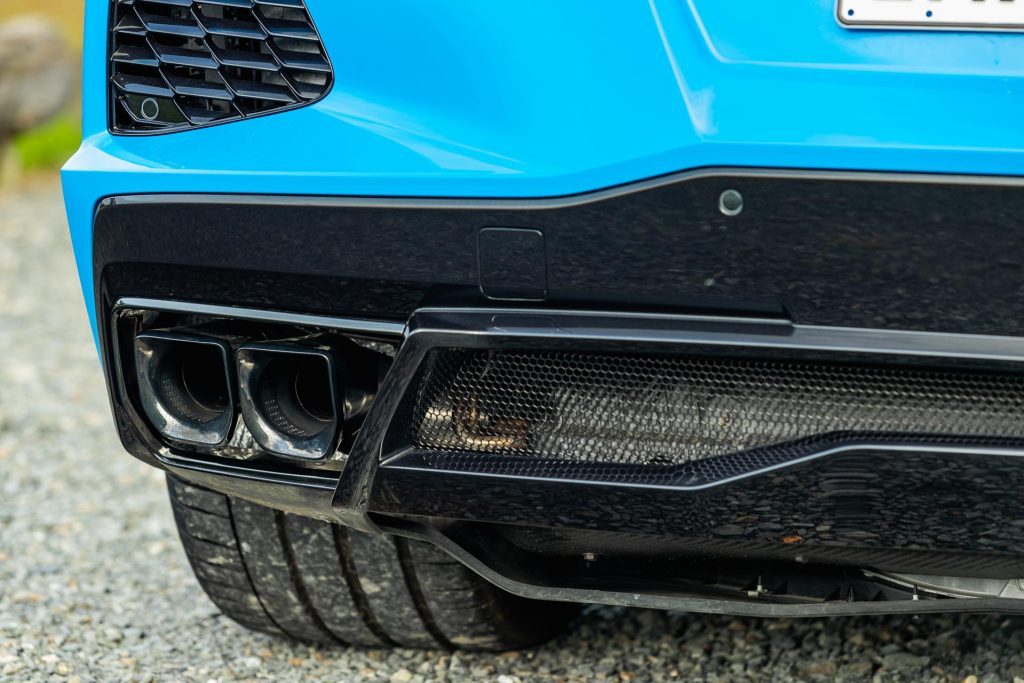
That said, the Corvette’s an easy thing to nip to the shops in. Getting in with the roof in place is the hardest part; it’s low, so difficult to slump down into. Larger types will find the seat firm, and narrow around the hips.
All Stingrays come with the eight-speed twin-clutch auto that sends the 6.2-litre’s 369kW and 637Nm to the rears. Despite the burly numbers, it’s well behaved.
The twin-clutch engages smoothly, is tolerant of traffic and even tricky hill starts are no problem. It also helps manoeuvre the Corvette around slowly in reasonable refinement.
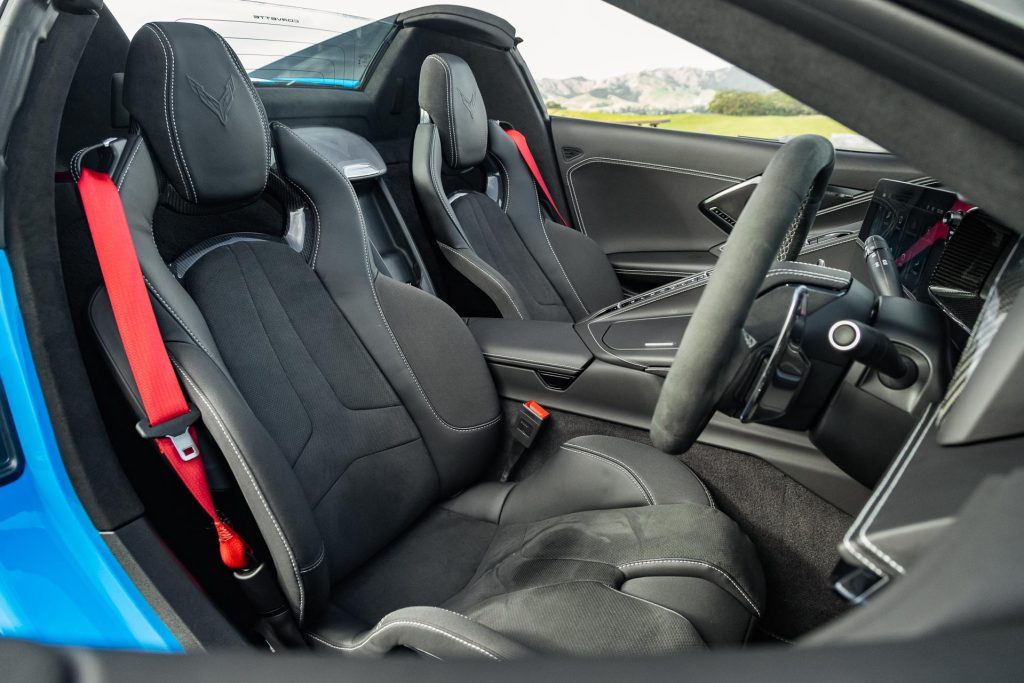
The eight is happy to amble along, slipping in and out of its eco/four-cylinder mode.
Corvette rides well enough too, progress lump-free for such a sportster. The turn around is on the large side but there’s no tyre chatter on full lock, and the e-lsd doesn’t bind either.
It’s a bit hard to see out of but there are good cameras at both ends, the front view with a quick access button which is next to the standard nose lifter.
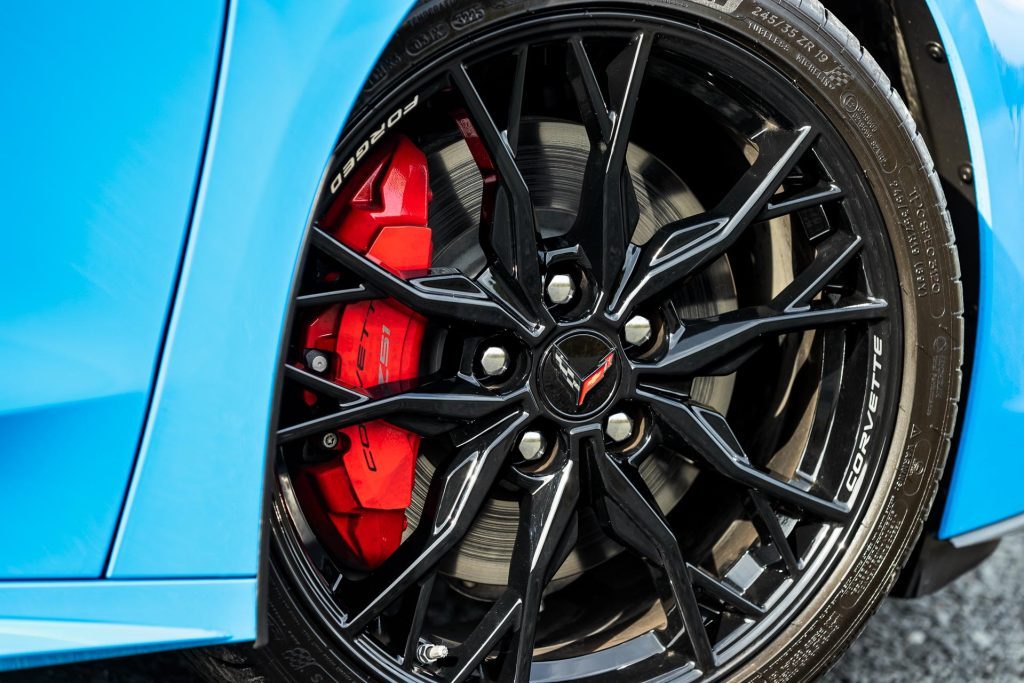
That helps it negotiate those trickier driveways and you can save the location so every time the car returns to said spot, it will automatically raise the front end.
But despite its ability to know where it is, in-built sat nav doesn’t make the list of standard features. So the small infotainment unit requires smartphone hook up for that.
The cabin is well made, not quite to Porsche levels, but the mix of leather-lined surfaces and stitching cover over GM’s usual harsh plastics. And those that are used are well disguised.
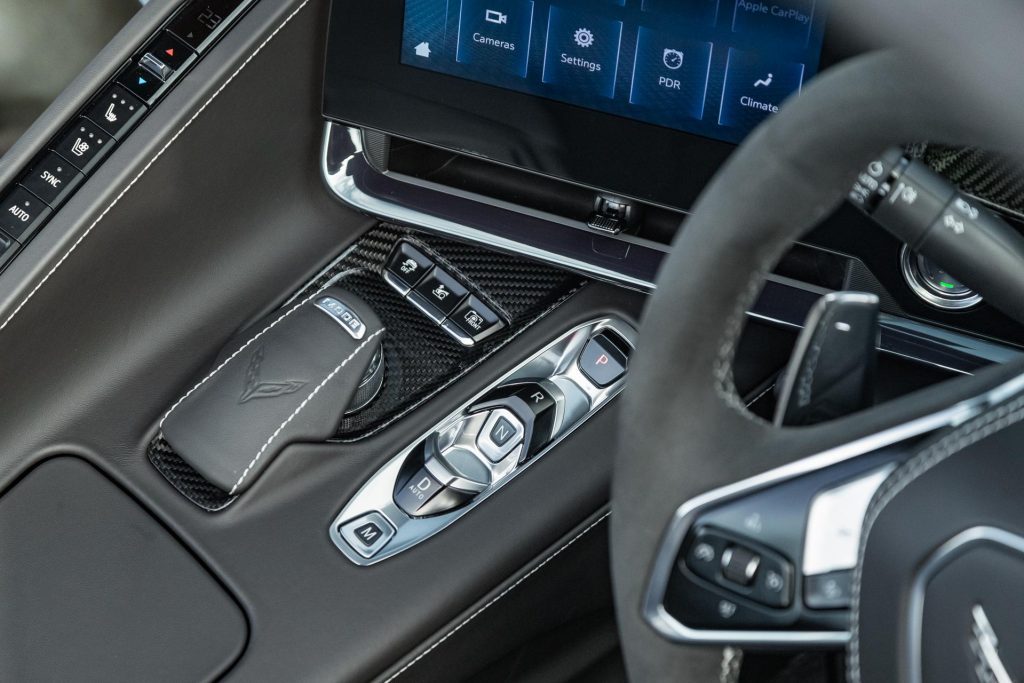
This is the 3LT model, which is $15k more than the 2LT. And from what we can pick from the spec sheet, the 3LT adds more leather and microsuede trim to the cabin, and a slightly different seat.
Whether that’s worth it is another thing.
There’s a modicum of practicality to this, as far as mid-engined sportscars go, with a boot front and rear and just enough storage in the cabin as well.
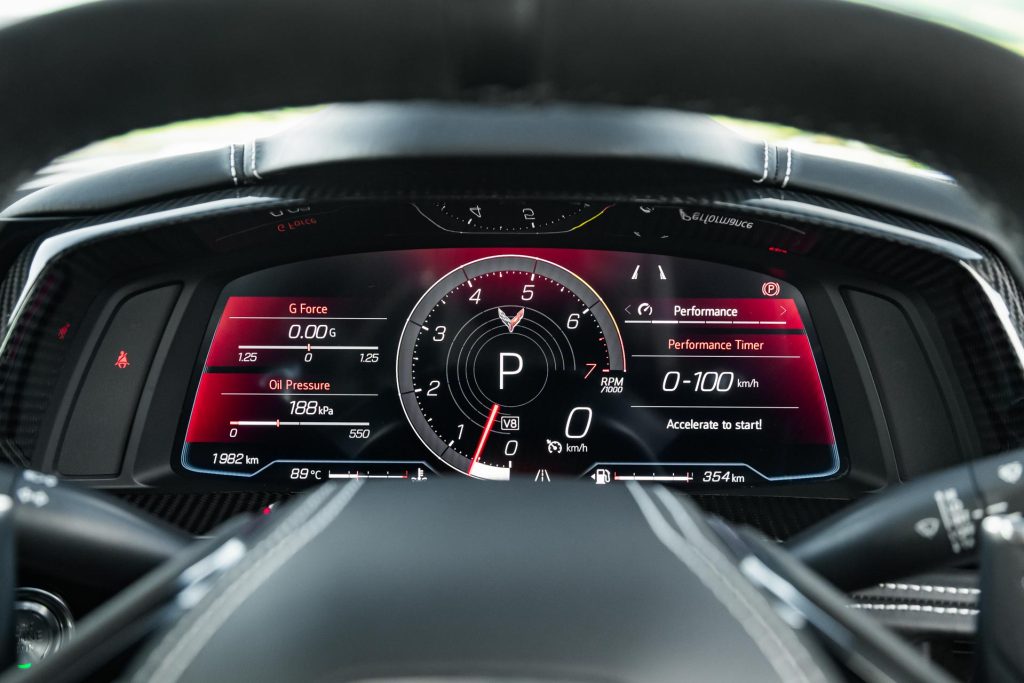
There are a few drive modes of course, from Tour (Comfort) to Sport to Track and a couple of customisable set-ups, the Z mode enabling you to tweak steering, suspension, powertrain response, exhaust, brake pedal action and the level of traction control.
Why so many modes? It’s good to configure the car for what you’re up to, Z mode allowing you to have the exhaust at full noise, rumbling, burbling and crackling on your commute, while having the suspension set to Tour.
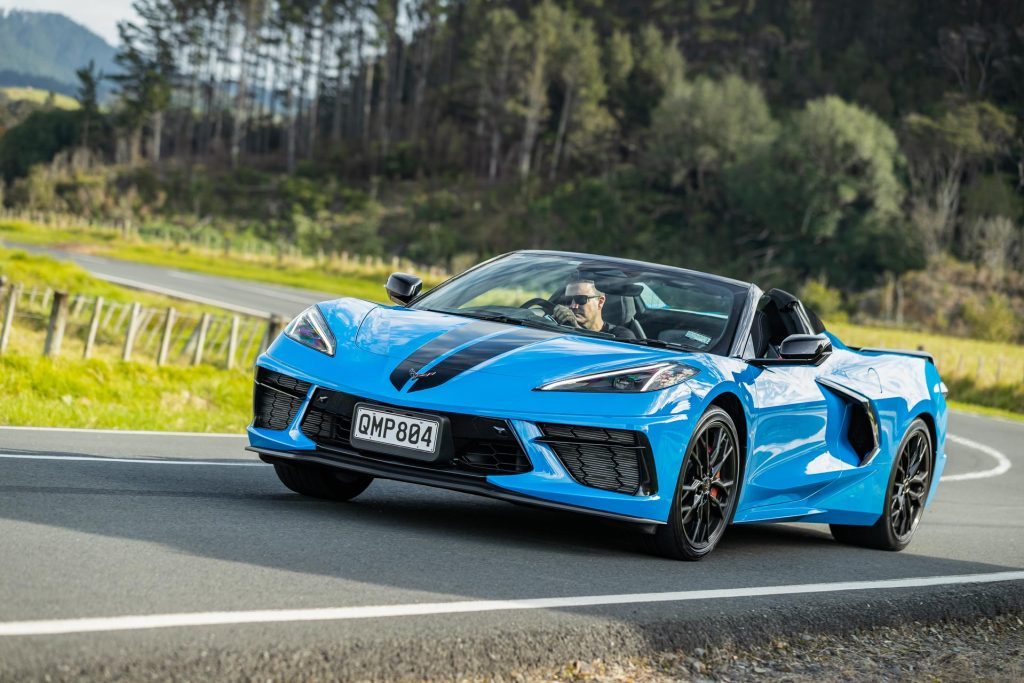
Track is best left for those circuit outings, while Sport is good for a quick blast in the boonies. Out there is where you can appreciate the fitment of the Z51 performance pack, which is standard on NZ-spec Corvettes.
That means Michelin Pilot Sport 4S rubber, magnetic ride control dampers, performance traction management, performance exhaust and the electronic limited slip diff.
At 1640kg, the Stingray is no lightweight but with the engine in the right place, it’s well balanced.
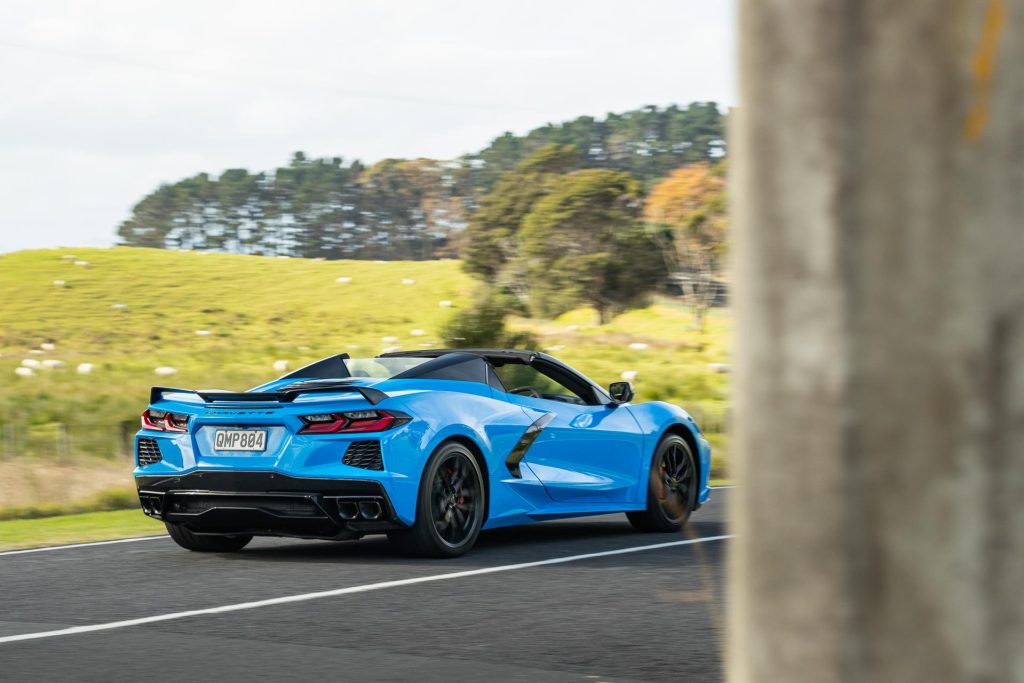
The wishbones at each corner controlled by top notch dampers see this ride the bumps at speed too (all those pot holes still need to be dodged however).
The steering is quick, effortlessly pointing the nose with intent, and the chassis contains the LT2 beast well.
The faithful front end bites and sticks, while the traction management doles out the torque just so; it takes a concerted effort to get the TC light flickering.
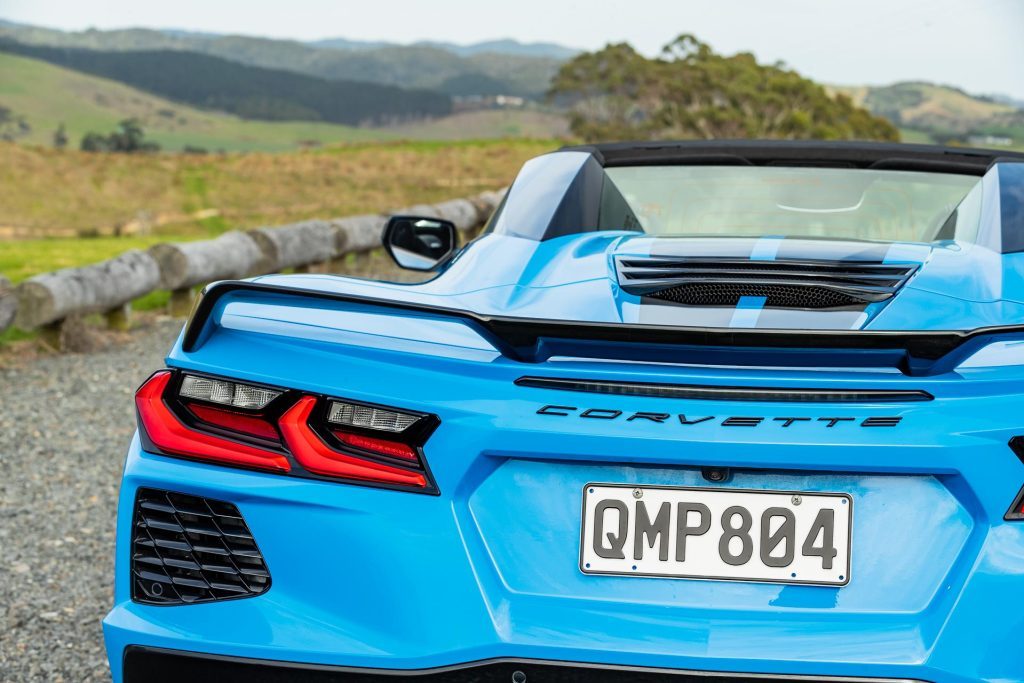
The brakes, set to their most responsive, clamp quickly, the pedal firming nicely so you can really lean into them, balancing the car into the bends. The twin-clutch in its auto mode could be smarter when braking by snapping down a cog or two before heading into the bends.
But it’s reluctant, preferring to kickdown when you get back into the power. So you’re forced into paddling it, which isn’t such a biggie, given it’s always fun to flap.
The V8’s big torque in the lower rev band gives over to the power as the crank speed rises, though just as the kilowatts peak at 6450rpm, you’ll need to pull a gear to avoid hitting the limiter.
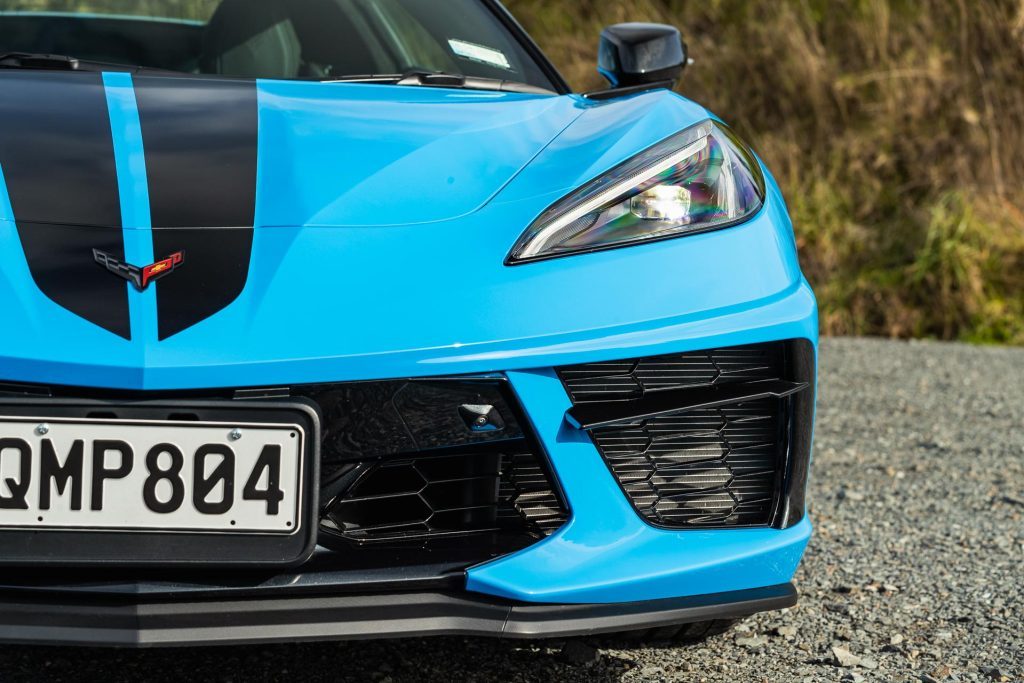
And yet it feels like it could keep pulling. The limitations of a two-valve head.
The throttle response could be sharper too. Guess those aspects, revs and response, are the preserve of the free-spinning Corvette Z06’s 5.5-litre DOHC V8, its flat plane crank design allowing for an 8600rpm redline.
That should be something.
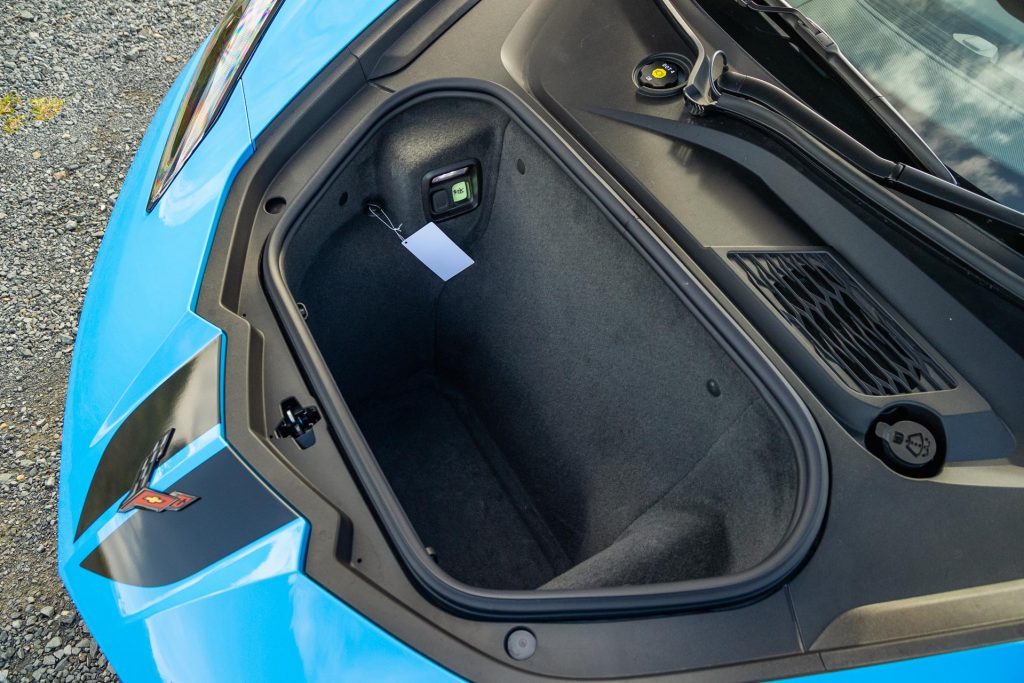
Fuel consumption for this Stingray is listed at 15.1L/100km on the rightcar site, the average sitting in the mid-teens for us, rising into the low 20s during the more exciting moments behind the wheel. But that’s V8 life for you.
At $215,000, the Corvette Stingray 3LT Convertible is expensive but has few real rivals. Mid-engined Ferraris, McLarens and Lambos are twice and thrice as much, and yet the Chevrolet has a similarly exotic look.
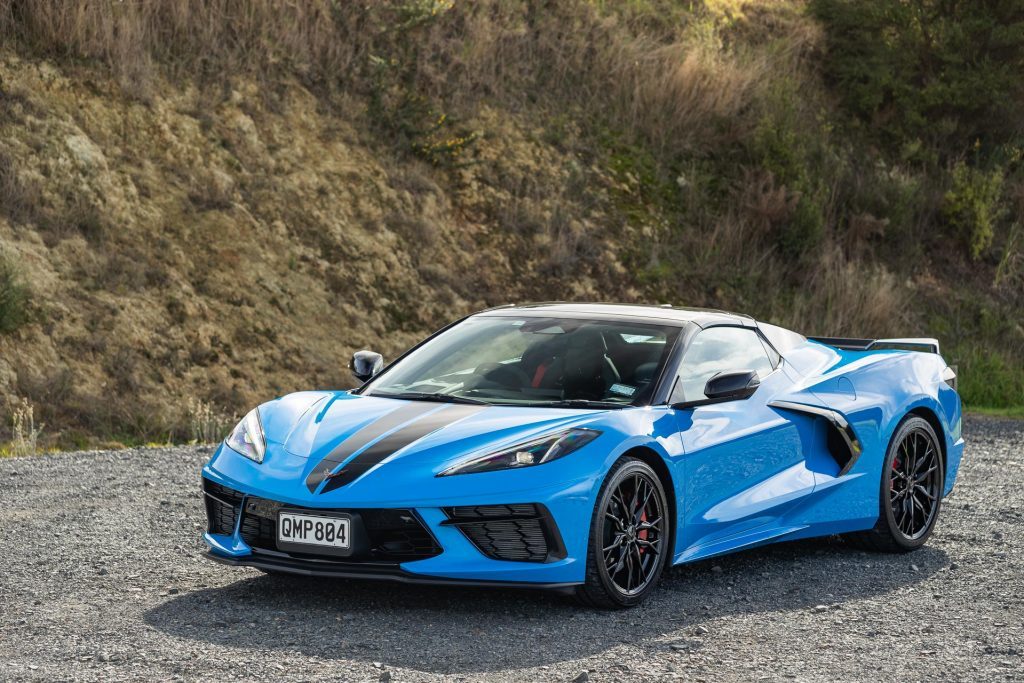
We’d rather the Vette Coupe than the similarly priced Lotus Emira.
The 718 Cayman/Boxster in 4.0 GTS guise at circa $200k with options would have us thinking hard, though the Chevy offers better performance with a higher quotient of look-at-me value too, if that’s your thing.
| Model | Chevrolet Corvette Stingray 3LT Convertible |
| Price | $215,000 |
| Engine | 6162cc / V8 / DI |
| Power | 368kW@5150-6450rpm |
| Torque | 500Nm@2250-5600rpm |
| Drivetrain | 8-speed twin-clutch / RWD |
| Fuel Use | 15.1L/100km |
| C02 Output | 349g/km |
| 0-100km/h | 3.65sec |
| 80-120km/h | 2.31sec (75m) |
| 100-0km/h | 35.12m |
| Stability systems | ABS, ESP |
| Safety | AEB, LDW |
| Luggage Capacity | 357L |
| Tow rating | Not rated to tow |
| Fuel Capacity | 70L |
| Tyre size | f-245/35R19 r-305/30R20 |
| Warranty | 3 years/100,000km |
| ANCAP rating | Not rated |
| Weight | 1638kg (claimed) |
This story first appeared in the July 2024 issue of NZ Autocar magazine.


